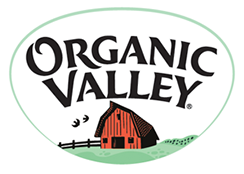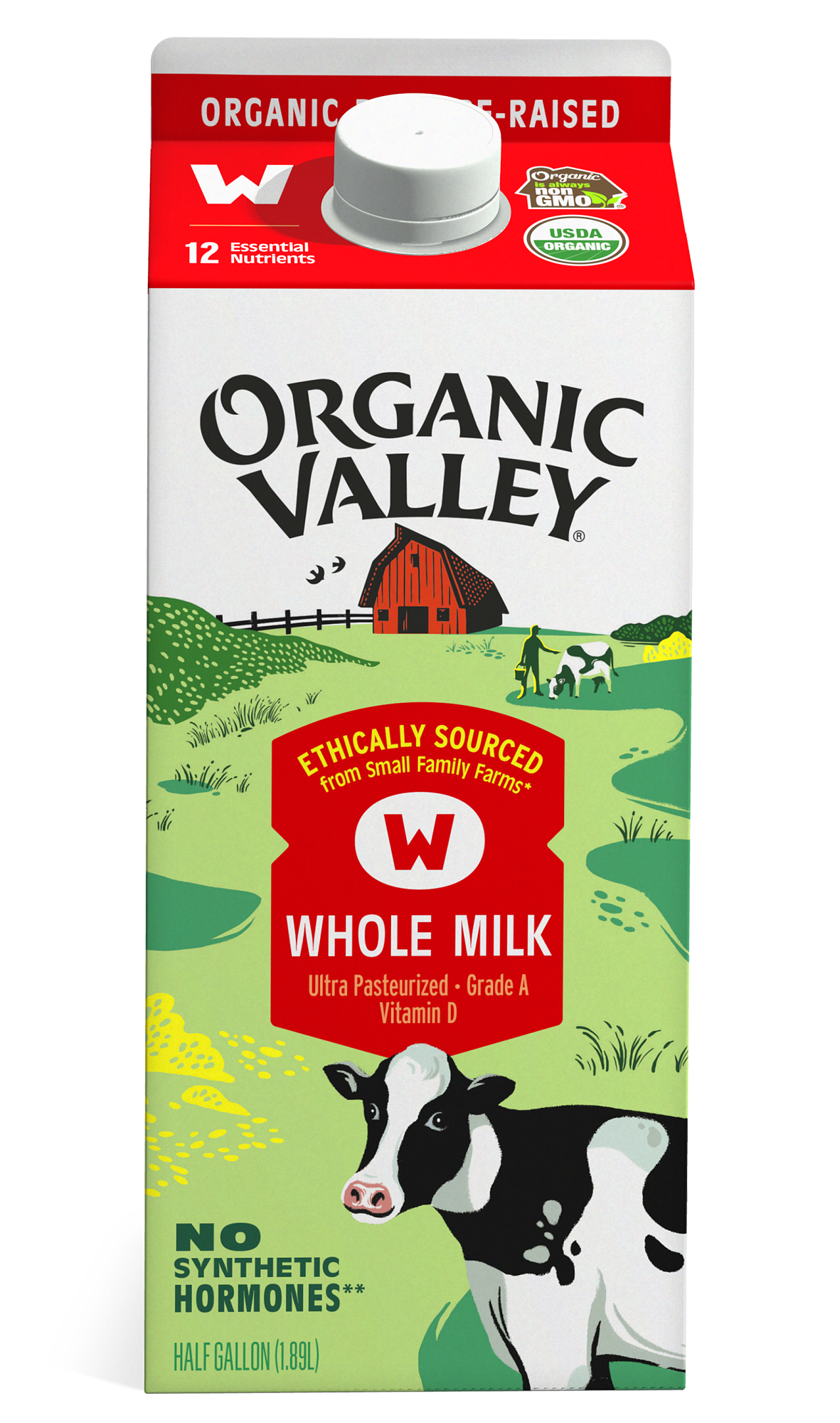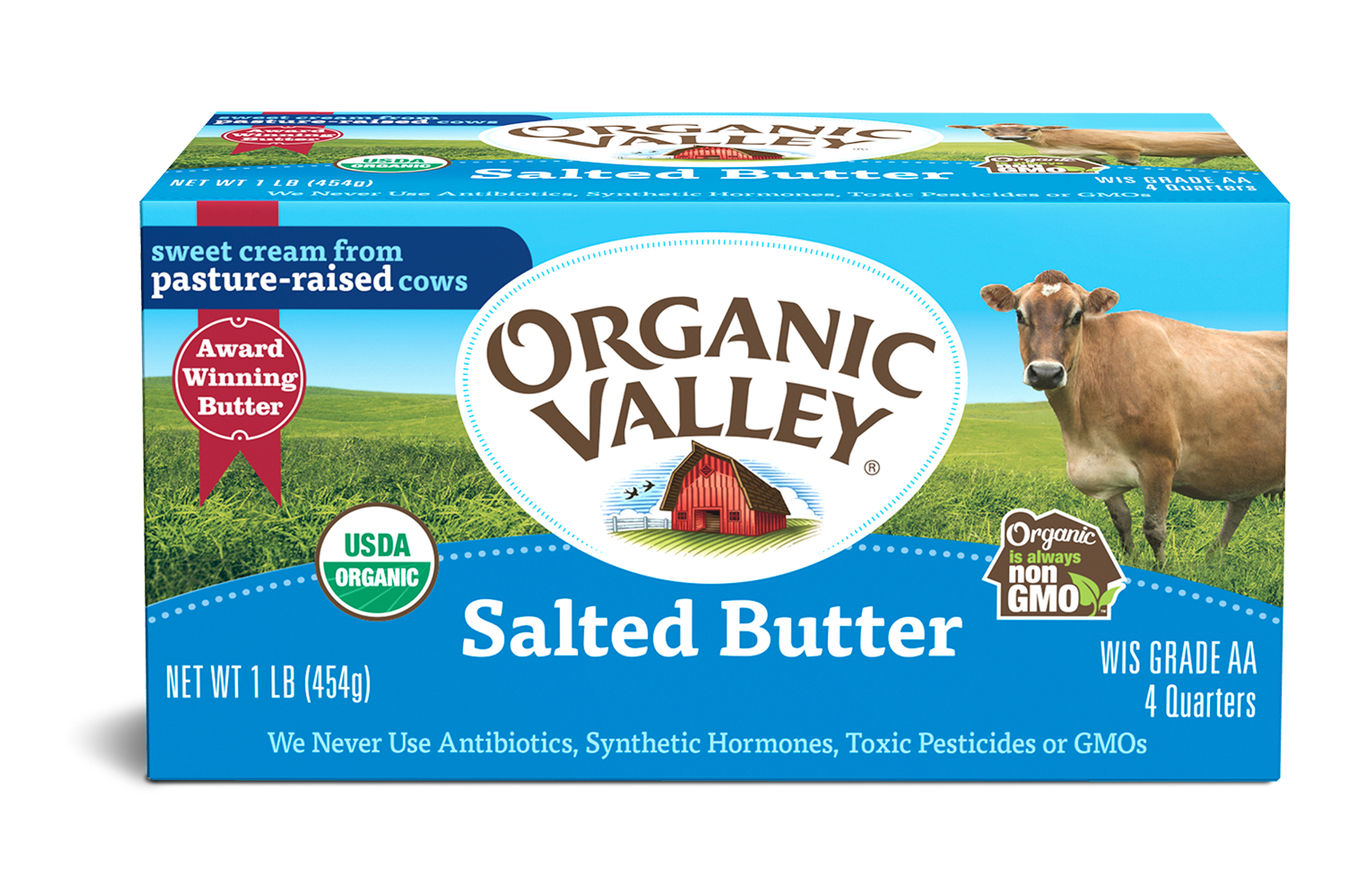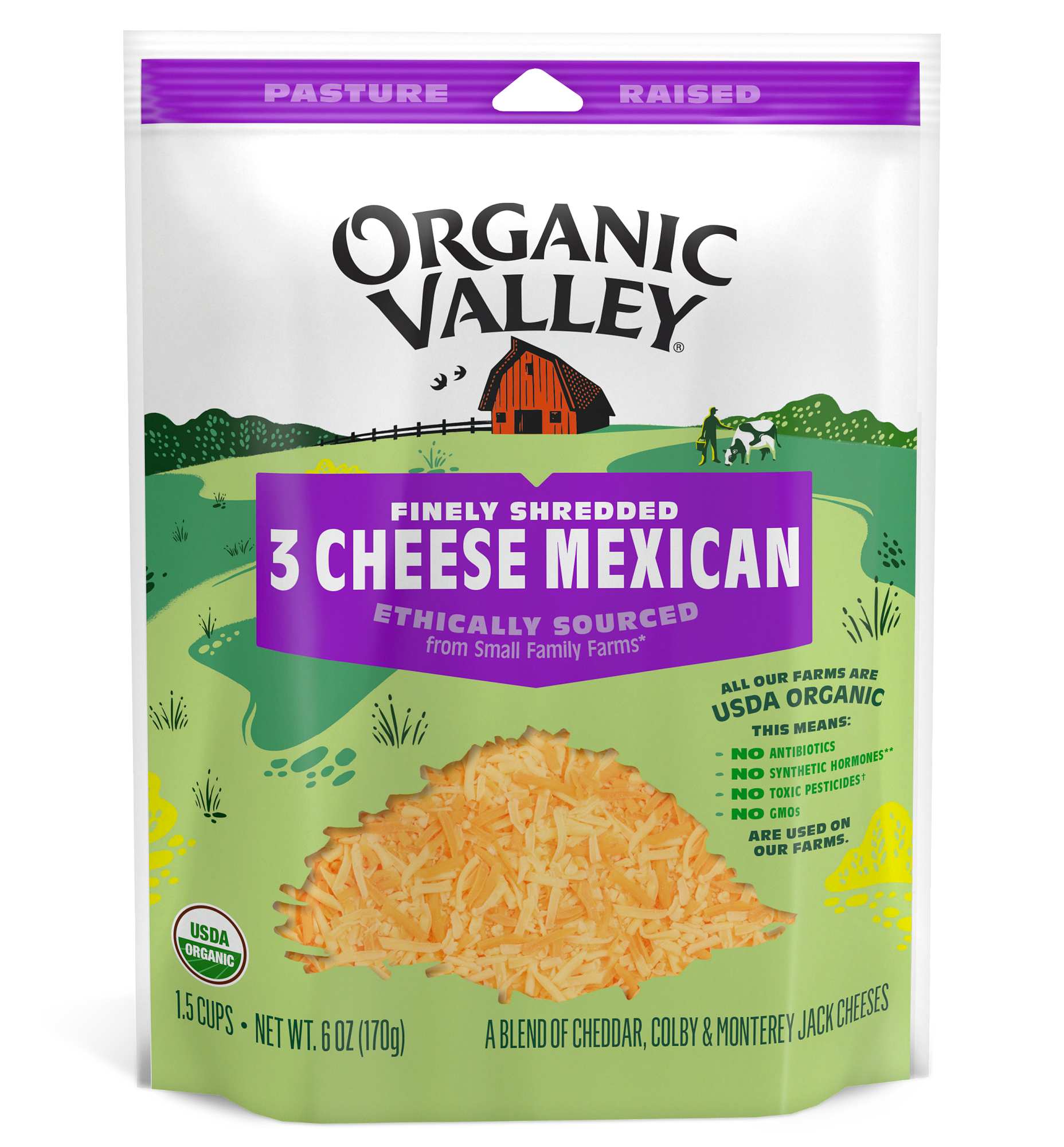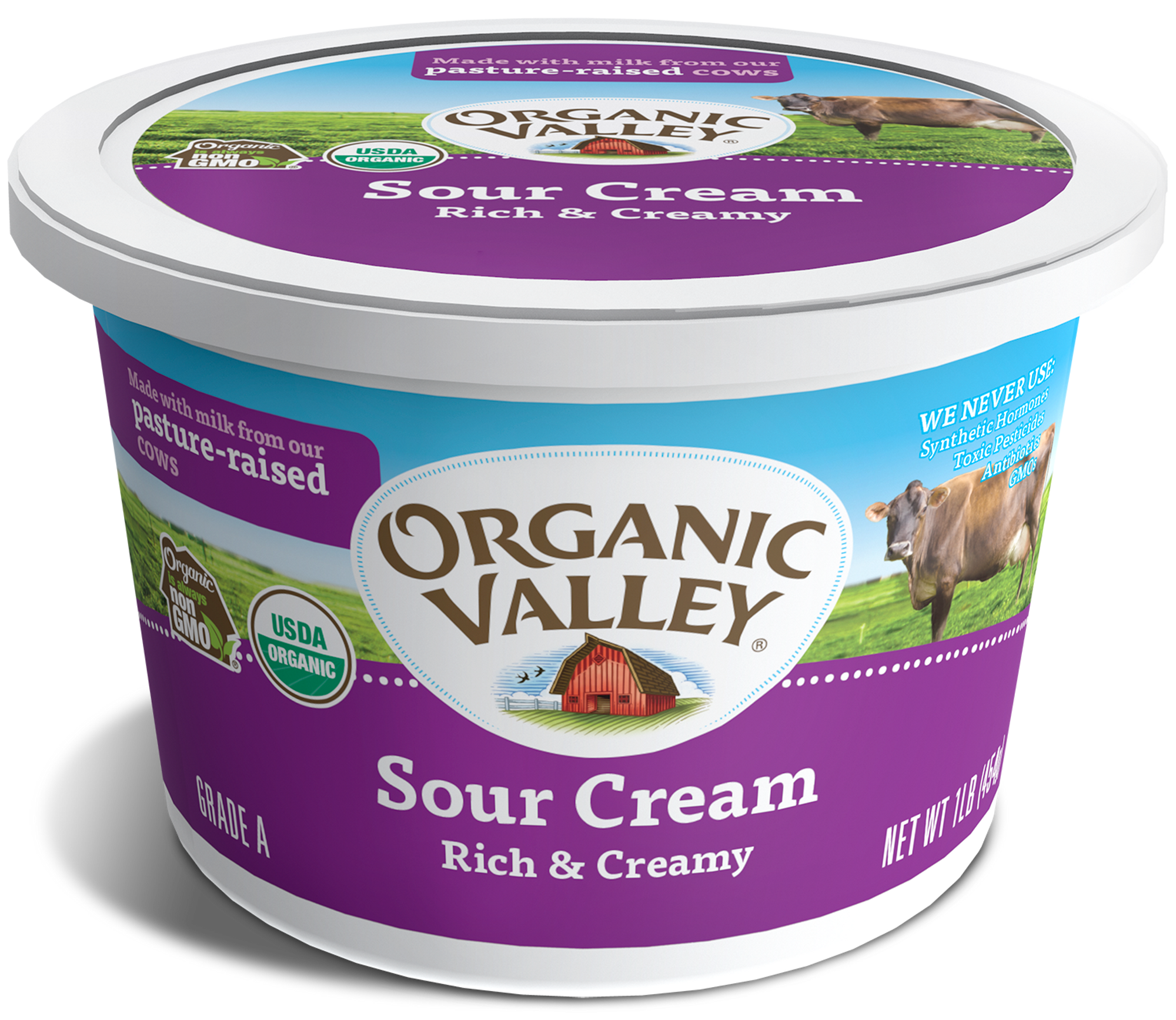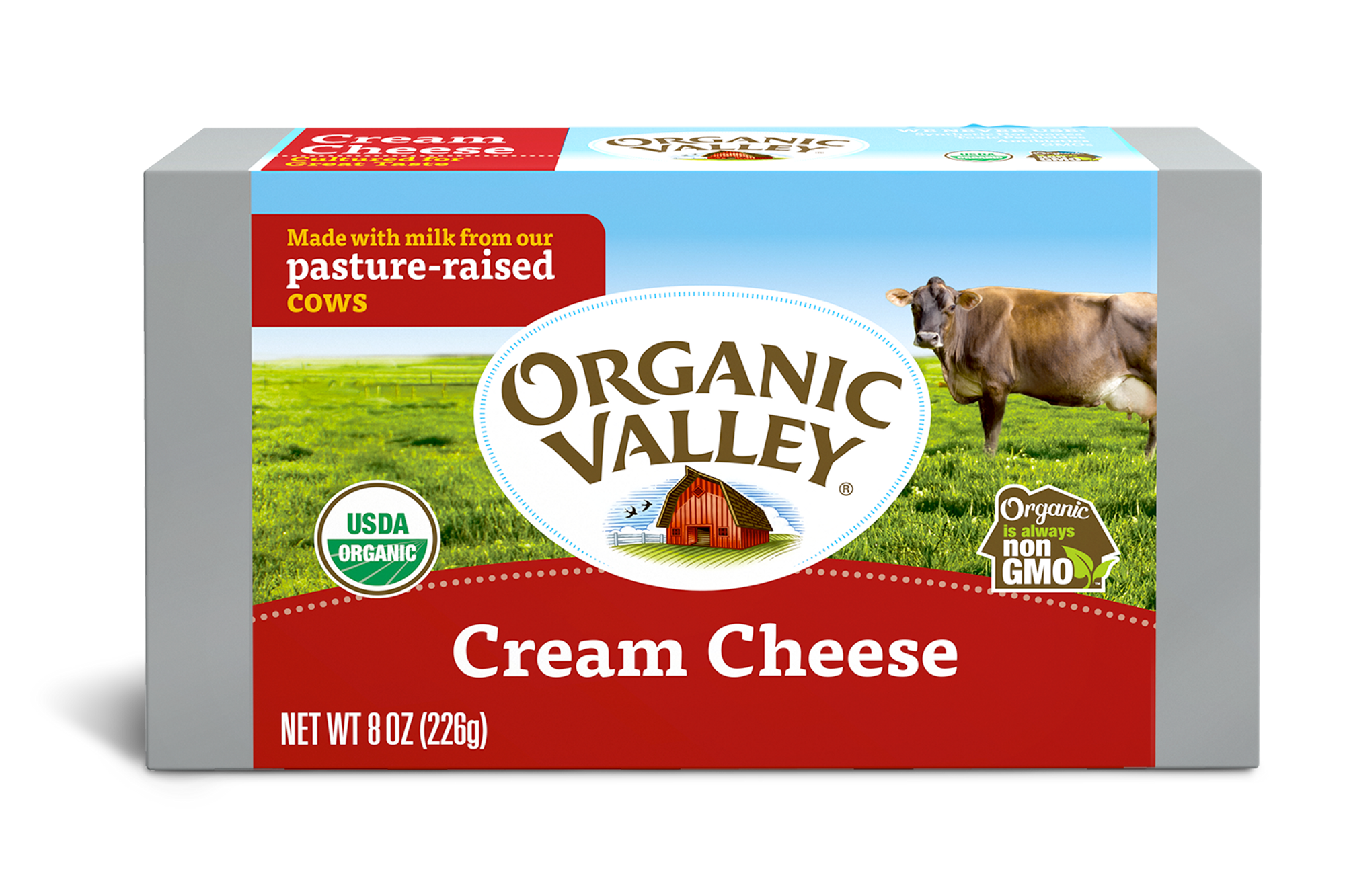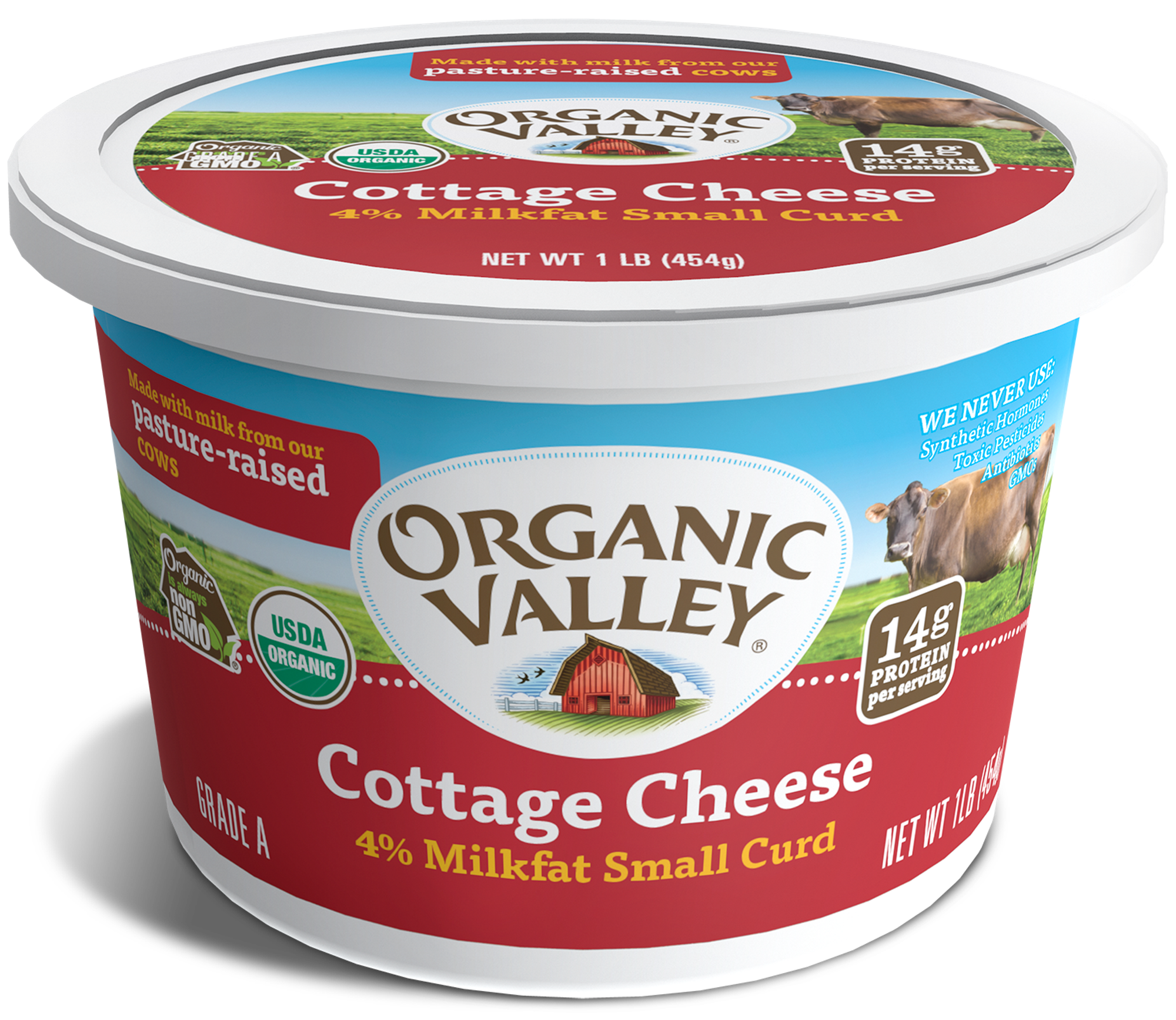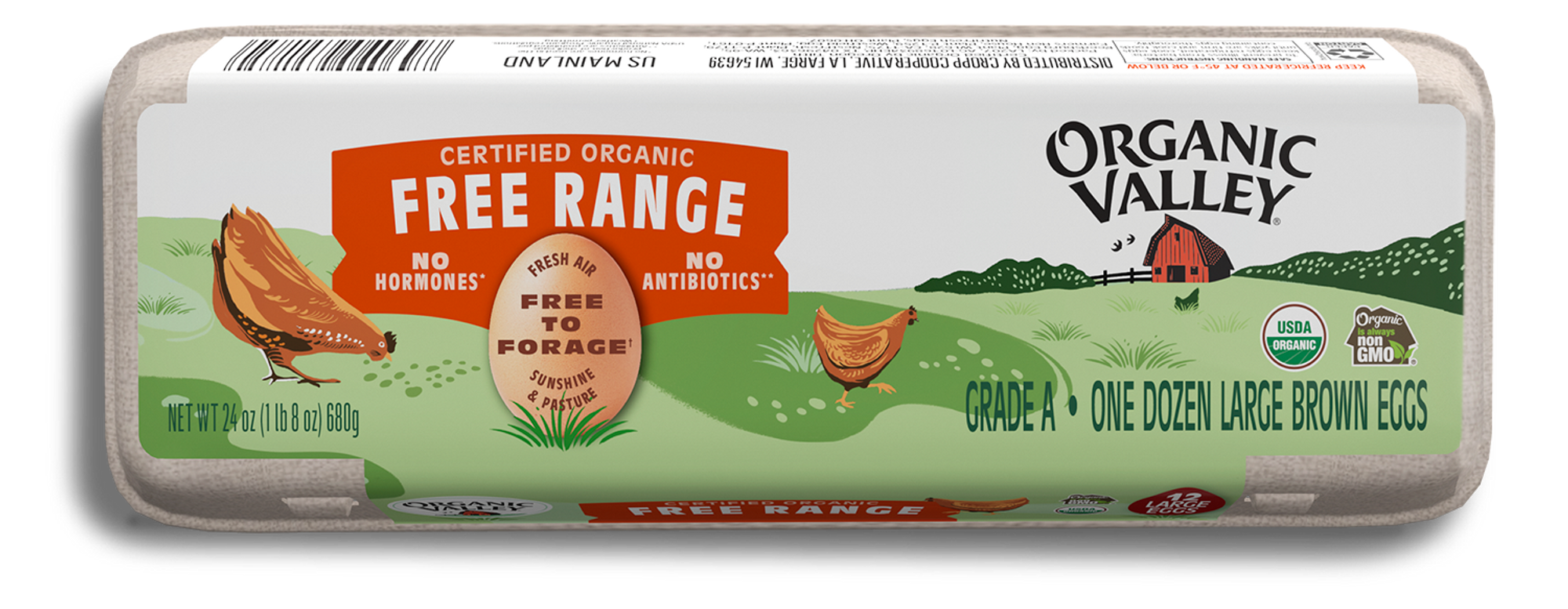
Farming
Antibiotics & Livestock: What You Need To Know
Lena Brook is a Food Policy Advocate with the Natural Resources Defense Council’s (NRDC) Food and Agriculture Program. Lena uses her background in advocacy and communications to influence decision makers of all kinds—from elected officials to parents and doctors—to fight the overuse of antibiotics in agriculture and the resulting problem of antibiotics resistance.
“We reserve antibiotics for treatment purposes in the human medical context, and that’s actually exactly what we’re [NRDC] pushing the livestock industry in the United States to do,” says Lena, emphasizing: “reserve these precious drugs for treatment purposes or if there’s a disease outbreak that has been diagnosed or identified.”
In other words – NOT for prevention of disease.
And why, exactly, is Lena so concerned about the use of antibiotics in the United States’ livestock industry? She breaks it down for us:
“When you use these antibiotics over and over again, you create resistant bacteria,” and resistant bacteria are a threat to humans because they “essentially become stronger than the medicine used to treat them.”
It would be an understatement to say this is not good. Lena shares, “a woman in Nevada died from an antibiotic-resistant infection. It was an incurable infection and they gave her 26 antibiotics. That’s the entire suite of antibiotics available to US doctors and not one of them worked.” It’s the increasing failure of antibiotics in cases like this that concerns the NRDC (and should alarm the rest of us as well.)
However, it’s also not too late to avoid this grim future. “Recent polls show that nearly 45% of consumers are committed to this idea of buying meat and poultry that were not raised with antibiotics. So the American public is on our side,” says Lena, and she hopes that with mounting pressure from consumers real progress can be made.
Listen below or subscribe on iTunes, Stitcher, Google Play or wherever you get your podcasts.
Welcome to Rootstock Radio. Join us as host Theresa Marquez talks to leaders from the Good Food movement about food, farming, and our global future. Rootstock Radio—propagating a healthy planet. Now, here’s host Theresa Marquez.
ANNE O’CONNOR: Hello, and welcome to Rootstock Radio. I’m Anne O’Connor, and I’m here today with Lena Brook, who is a food policy advocate with the Natural Resources Defense Council’s Food and Agriculture Program. Welcome, Lena.
LENA BROOK: Thank you so much for having me on the show, Anne.
AOC: Great to have you here. So, the Natural Resources Defense Council—which we’ll be calling the NRDC throughout this interview—was founded in the 1970s by a group of law students, attorneys… And these folks wanted to work to safeguard the earth. It’s a fascinating beginning. Lena, what can you tell us more about these beginnings?
LB: Sure. So NRDC was founded in 1970 by John Adams, Richard Ayres, John Bryson, and others. And this was a group of attorneys, primarily, and they brought a lot of scientists along for the ride, and founded this organization that is now at the forefront of the environmental movement. We have over 2 million members and online activists nationwide, as well as a staff of over 500 attorneys, scientists, and policy experts like myself.
AOC: So policy is one of these worlds that really affect so many people’s lives, and yet it’s a little obscure for the average listener, right? I mean, not everybody follows policy so directly. And the FDA tells us that about 70 percent of all the antibiotics that are important for human medicine, today are going towards livestock production. So you’re talking about this—why is that bad for human health?
LB: That’s a great question. So yes, we know that about 70 percent of antibiotics that are medically important are sold for livestock use—not human use—in the United States. And that phrase “medically important” is really important—actually the most important, significant part of that statement. Because what that essentially means is that either the drugs that we’re familiar with in a doctor’s office, things like penicillins or tetracyclines, either those drugs themselves or close cousins that are in the same class of drugs are actually given to animals on a regular basis, typically through feed and water.
And this historically had been done for two main reasons. One is to hasten the growth of the animals, for reasons that are actually, I believe, yet undiscovered. Giving antibiotics in low doses to animals does have this consequence, or impact, of faster growth. Then the other main reason why these drugs are given to animals is for so-called disease prevention reasons. And animals in industrial operations, industrial farms, or factory farms, depending on the terminology one uses—which encompasses the vast majority of animals that are raised for food in the United States—are typically living in stressful, sometimes unsanitary and often confined conditions where disease is quite common. And so these antibiotics are given on a regular basis to help animals fight off infections.
AOC: So let me just clarify right there: so what you’re talking about is, in industrial operations, farms are giving animals antibiotics prophylactically and in order to increase their growth rate so that they can turn those animals more quickly.
LB: That’s absolutely right, that’s one of the reasons. Then the other really big reason is to prevent diseases, which, in a human context there’s really no corollary to this routine use of antibiotics for disease prevention. We would never find ourselves in a situation where we would sprinkle antibiotics on our kids’ cereals—
AOC: Because winter’s coming, so we know that you’re going to be around a bunch of sick kids so, “Here honey, have your tetracycline this morning.”
LB: Yeah. “Here’s your breakfast, let’s put some antibiotics on that.” We just don’t do that. We reserve antibiotics for treatment purposes in a human medical context. And that’s actually exactly what we’re pushing the livestock industry in the United States to do: to reserve these precious drugs for treatments purposes or if there’s a disease outbreak that has been diagnosed or identified, of course. But not to use these precious drugs day in and day out for prophylactic purposes.
One thing I just wanted to mention again is that the reason that this high use and this overuse of medically important drugs in the livestock sector is so concerning is that when you use these antibiotics over and over again, you create the resistant bacteria that then can travel into communities. And resistant bacteria from farms can move through air, through water, it can move through soil and even inadvertently on workers.
AOC: And so the antibiotics won’t work?
LB: Yeah, so this resistant bacteria becomes a threat to humans because the bacteria essentially becomes stronger than the medicine used to treat them. And so what we’re seeing is an increasing failure of the very drugs that we rely on to treat a wide range of infections, starting to fail.
AOC: And that’s already happening on a pretty grand scale, right? I mean, that’s already well under way. This idea that the antibiotics aren’t going to work for much longer is an idea that we’ve been aware of for some time.
LB: Yes, that’s exactly right. Sir Alexander Fleming, who, he created penicillin—he was sort of the father of antibiotics—he warned of this very thing, of bacteria becoming resistant if we weren’t careful with how we used the antibiotics in our tool kits, back when he created the drugs nearly 100 years ago.
AOC: So we see this interesting parallel with pesticides, right? Like we use pesticides but the weeds get smarter and so we have super weeds, and then you have to get differentpesticides, and it’s this cyclical thing. There doesn’t appear to be any good ending there. And with antibiotics—you know, my daughter got bit by a dog a year or so ago, and it got infected and it went systemic in her body. And I was so grateful—she was so sick—and I was so grateful that the antibiotics were still working!
LB: She’s incredibly lucky, and I’m so glad to hear about the positive outcome. I mean one of the scariest bits of news that we’ve seen on this issue in a long time came out just in January a few months ago. A woman in Nevada died from an antibiotic-resistant infection. It was an incurable infection, and they gave her 26 antibiotics—that’s the entire suite of options available to U.S. doctors—and not one of them worked.
(9:09)
AOC: Wow. So this is how policy connects with our lives. And I want to move from that into this work that you’ve done with the report that you put out that is really so connected to somany people’s lives. So I’m wondering if you can talk to us about the work that you’ve done with fast food and antibiotics and meat.
LB: Yeah, absolutely. So in addition, as I mentioned earlier, in addition to the work that I do on policy here at NRDC and that my colleagues on the food and ag team do, we also are really aware that consumers are becoming so educated about a variety of different food issues. And through the buying power that they’re exercising in the marketplace, they’re actually changing the landscape of how food is produced in the United States in a positive way. And we know that when it comes to antibiotic-safe meats, recent polls showed that nearly 45 percent of consumers are committed to this idea of buying meat and poultry that were not raised with antibiotics. So the American public is on our side and consumers are demanding this product.
And what companies have been doing, and what we’ve been calling on companies to do, is to change their meat and poultry purchasing policies, their supply chain policies, and make commitments that meet this consumer demand. And the Chain Reaction antibiotic scorecard is a great example of how NRDC and other allied organizations that we worked with closely on this project—and those are groups like Consumers Union, the Center for Food Safety, Friends of the Earth, and—
AOC: Food Animal Concerns Trust.
LB: Yes, Food Animals Concerns Trust, exactly. So together we’ve put out, over the last couple of years, we’ve put out two scorecards. And what’s very heartening is that the second scorecard that we released in September of last year, which rated the antibiotics use policies and practices of the top 25 restaurant chains in the United States—these are reallybig restaurants, ranging from McDonalds to Starbucks to Chili’s, really national and global brands.
AOC: That’s places where like everybody in the country eats at regularly.
LB: Exactly. One of our goals is to mainstream good antibiotics use policies and practices, to get away from this idea that that’s niche and only for certain folks who can afford to pay extra. And what in fact we’re finding is that although there are just two companies, Panera and Chipotle, that have created such tremendous changes in their supply chains where they were able to earn an A grade, we actually found that between the first and the second year, twice as many companies were able to receive passing grades because of so many reading the writing on the wall, seeing how important this is to the American public. And then they would, in turn, these companies would make public commitments to change the way that their meat and poultry is raised.
AOC: So I just want to emphasize this, like it’s such a brilliant thing that you guys have done, I just am… When it first came out in 2015 I was cheering. I thought, “Oh, this is good! Everybody will see that it really does affect your everyday life.” And I think in 2015 Panera and Chipotle were the only ones that earned—were they A’s in 2015?
LB: Yes, Panera and Chipotle have been the leaders on this issue for a really long time, and right out of the gate they did earn the highest mark.
AOC: But in 2015 everybody else got F’s. Isn’t that right?
LB: Not quite. We had Chik-Fil-A coming in with a B, because they also made a commitment in 2014. Chik-Fil-A was sort of the first of this newer wave of companies making commitments on antibiotics.
AOC: Okay, good for them.
LB: So absolutely. And then we also gave C grades to McDonald’s and to Dunkin’ Donuts, interestingly enough. And the reason that Dunkin’ Donuts is interesting is because they sort of backtracked and changed, kind of reverted to a far weaker policy, which resulted in them being the only company to be downgraded from a C to an F.
(14:46)
AOC: If you are just joining us, you’re listening to Rootstock Radio. I’m Anne O’Connor, and I’m here today with Lena Brook, who is a food policy advocate with the Natural Resources Defense Council’s food and agriculture program. Today we’re talking about antibiotics, their use in the meat industry, and the NRDC and their partners’ 2016 scorecard on how top restaurants rate on reducing antibiotics in their meat supply.
And so we see that consumers can actually influence the food that they eat at all levels of the food industry. You don’t have to go to Whole Foods and get organic food to be influencing the kind of food that you’re eating.
LB: That’s right.
AOC: Dairy Queen and Jack in the Box and Burger King and Arby’s and IHOP and Denny’s—I mean, you’ve got them all in here, they’re all here—Chili’s, Sonic, Olive Garden, Little Caesar’s, Dominos, Applebee’s, KFC. Ah! Kentucky Fried Chicken—let’s talk about Kentucky Fried Chicken. What happened there?
LB: Sure, well—
AOC: ’Cause they were on the F—they got an F.
LB: They did, yeah. So as I was saying earlier, Chik-Fil-A came out of the gate in 2014 with a strong antibiotics policy. They said they were going to be completely—their chicken supply was going to be completely raised without antibiotics within five years. And then, not long after that, McDonald’s made a similar commitment for chicken, where they said, “Our chicken is going to be raised without these medically important antibiotics.”
AOC: And they got all kinds of good press for this, by the way.
LB: They did! They absolutely did. And people can feel good, because McDonald’s actually said it was going to take them two years to make this change, and then they ended up announcing last August that they completed the transition about six months early. So people can feel good about the fact that if they’re going to McDonalds and getting Chicken McNuggets, that that chicken is in this antibiotic-safe meat category, which is great. And lots of other restaurant brands started following suit. Subway made a similar commitment, Wendy’s, and even Taco Bell, which is part of the Yum! Brands family. And it wasn’t lost on us that the nation’s largest chicken restaurant, KFC, was pretty quiet on this issue.
So we decided to kind of leverage all of this momentum that we’ve seen in the marketplace on chicken and send a real, kind of, public call to action to KFC, letting them know that they really need to be a leader on this issue. And at the time, they were a real laggard. So we launched a campaign in May of 2016. We convinced over 350,000 consumers to sign petitions. And this was a collaborative effort between, again, between NRDC and U.S. PIRG, and Credo Mobile was in on that project in fact. And so we had a number of different advocacy organizations communicating about this with their members. And we delivered those petitions to KFC headquarters last August.
But I should mention—I’m going to take us a few months back to that campaign launch in May. And I did something that I have never done before: I actually traveled down to Louisville, Kentucky, to the headquarters of Yum! Brands, and spoke at their annual shareholder meeting, asking the company and its board and its leadership to take this issue of antibiotics use in its supply chain very, very seriously.
AOC: Wow, that was probably very eye-opening for a lot of them.
LB: I think it was. I think it made quite an impact. I bet it’s not often that folks from all over the country show up in Louisville to have these conversations. So it was a good way to kick off the dialogue. And then sometime later in the year we delivered those petitions that I had mentioned. But all along, the company was rather quiet. And we were just getting kind of inklings of information through media articles saying that they were discussing this with their suppliers.
So when the Chain Reaction II report came out in September of 2016, we definitely used that as an opportunity to remind KFC that here they are again, second year in a row, getting an F, and really wanting to encourage them to step up and do their part. And it took another six months or so, but that’s exactly what they did on April 7th.
AOC: All right, tell us what they did on April 7th.
LB: KFC announced on April 7th that by the end of 2018, the chicken that’s served across all of their 4,200 U.S. restaurants will be raised without the use of medically important antibiotics.
AOC: Wa-hoo!
LB: Yeah, this is great news!
AOC: Forty-two hundred restaurants—I mean, that’s a big impact right there.
LB: Absolutely. I mean I imagine that KFC is one of the largest chicken buyers in the restaurant industry.
AOC: Yeah, I think so. And so you’re making a huge impact with this Chain Reaction report in its second year.
LB: Absolutely. Yeah, the report is—it’s great to show progress, especially from the first year to the second. Twenty-sixteen, when we did Chain Reaction II, really was the year of the chicken. As I mentioned earlier, twice as many restaurants received passing grades. Nine companies, as compared to four the prior year, received passing grades. And one company in particular I think is worth mentioning today, which is Subway, received a “most-improved” grade, because in 2015 we were campaigning against Subway and sending a call to action to that company to set a strong antibiotics policy. And they not only set a strong policy for chicken, but they actually, Subway committed to transform their entire meat and poultry supply—so pork, beef, turkey, and chicken—within ten years’ time. So they shot up from an F grade, first year, to a B.
(22:41)
AOC: Wow, way to go, Subway! So this is such exciting news. What kind of response have you heard from consumers and, I suppose, through the media? How are people meeting the scorecard?
LB: The scorecard makes a splash every year that we release it. Last year we received tremendous interest from the media, as we did the inaugural year. But you would sort of expect that the first year that a report like this comes out. We were very pleasantly surprised to see that—I mean, there were hundreds of media articles written on this in outlets as mainstream as CNN and FOX News. And we often see questions on social media about the scorecard, so there is some direct consumer engagement as well.
AOC: Yeah, it really hits people right where they live, right? I mean, so many people eat at these restaurants, and if you don’t know what the score is for the restaurant that you’re eating at all the time, you surely want to look it up, right? So how do people find where the scorecard is? What’s a good place for them to go look?
LB: We have the scorecard front and center on our website. There’s a page for the Chain Reaction report. And the easiest way—I mean, you can certainly click through NRDC’s website to find it under the antibiotics in livestock page—but the easiest way, I think, to find it, what I often do is just Google “NRDC Chain Reaction” and it comes right up in the search. And we have the 2016 scorecard on the landing page, but for anyone interested, the prior year’s report is also there.
AOC: Okay, so let me talk about another ramification, perhaps, directly from this report. In January of this year, the FDA has some new regulations also that are going to curb the use of medically important antibiotics in food animals unless there’s an actual therapeutic need. Was the NRDC involved in the development of these new policies?
LB: No, we’ve actually been advocating for stronger policies than what we are currently seeing from the FDA. The main concern is that the FDA regulations are focused only on that growth promotion and reigning in those growth promotion uses that I had mentioned earlier in our interview.
AOC: So it’s not—the prophylactic use is still allowable?
LB: That’s exactly right. But what’s challenging is that there’s a lot of overlap in how antibiotics, practically speaking, are administered, whether it’s for growth promotion purposes or for the prophylactic disease prevention.
(26:19)
AOC: So it’s not as significant a change as we might hope for. But let me ask you this, because one of the things that you’ve talked about is the fact that the writing is on the wall. Consumers want this, consumers are pushing for this. When they have the information, they are making choices with their pocketbooks. And so companies have to be paying attention to those consumer demands.
LB: That’s exactly right. And the chicken industry has shown us, I think, that where there’s a will, there’s a way. I mean, they were wrestling with these challenges of phasing out routine use for a long time. This certainly didn’t happen overnight, although it might seem that way. But at this point, our estimates indicate that over 40 percent of the U.S. chicken industry is now either fully converted to responsible antibiotics use practices or under commitment to do so within the next few years.
AOC: Right. I mean, if you’re a supplier, I suppose when you’ve got KFC saying, “Hey, we need to supply 4,200 stores across the country,” you’re going to start thinking about that need, right?
LB: That’s right, and there’s still 60-plus percent of the industry that isn’t there, but I sure hope that they’re paying attention and will come along before too long because the excuse of “It can’t be done” just simply isn’t valid.
AOC: Okay, Lena, as we wrap up here, can you just one more time give our listeners a website or a way to reach your work.
LB: Yeah, absolutely. So NRDC can be found at www.nrdc.org. And if you click through under “Our Work” to “Food,” and then to “Livestock Production,” the Chain Reaction project will be accessible that way; or Google “Chain Reaction NRDC.”
AOC: Lena, thank you so much for joining me today.
LB: Thank you so much for the conversation, I’ve really enjoyed it.
AOC: Yeah, and for your work. And thank you, listeners, for joining us today. We’ll see you next week.
